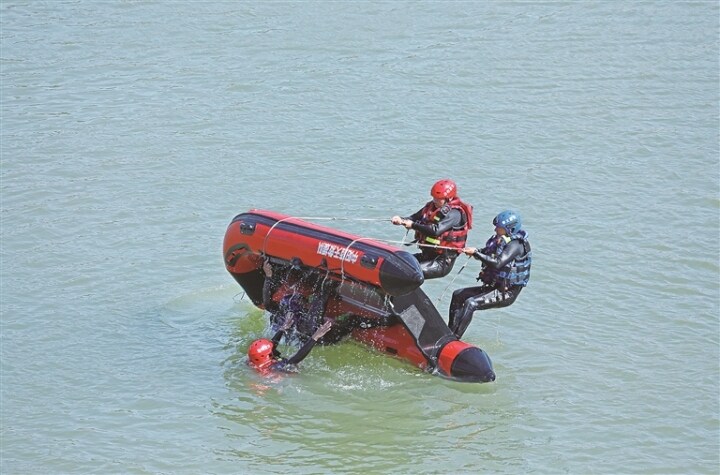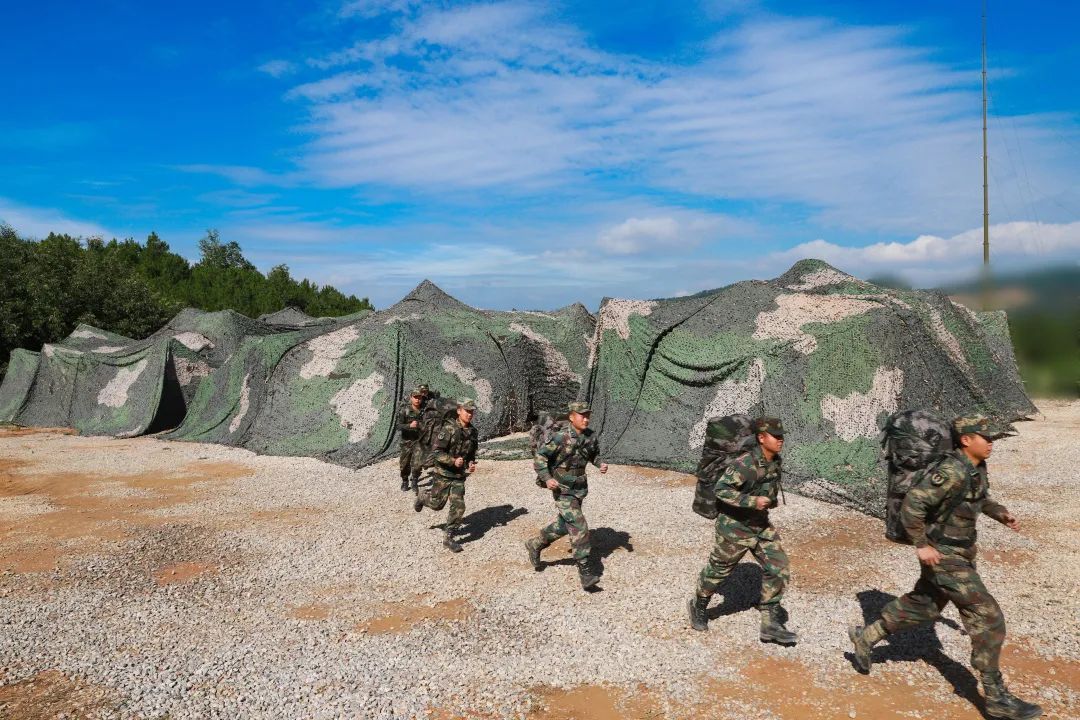In the middle of the anti -missile, there are three issues that are necessary for science popularization
Author:Global Times Time:2022.06.21
The mid -range anti -missile is equal to the off -the -layer off -the -corns?
According to the Ministry of Defense of China, on the evening of June 19, 2022, China conducted a technical test in the territorial interception interception technical test in the country, and the test achieved the expected purpose. What is the mid -range anti -missile? What are the advantages of anti -missile in the middle section? Why do great powers attach great importance to the mid -range anti -commission?
The flight of ballistic missiles is usually divided into initial, middle and last. Regarding the division of the initial, middle and last sections of the ballistic missile, a very popular saying is that the first stage is the section of the first section until the air is flying out of the atmosphere; Flight in the atmosphere. The so -called interception of the mid -range anti -missile is usually intercepting the ballistic missile in the middle of the flight. The mid -range anti -missile system is the anti -missile system for mid -range anti -commissioned interception.
However, Chinese military expert Zhang Xuefeng said that the above statement was "not accurate enough." At present, countries generally determine the 100 -kilometer -high Carmen as the dividing line of the atmosphere. The outer space is 100 kilometers away, and the aviation space within 100 kilometers. Some short -range ballistic missiles, the apex of the missile just came out of the atmosphere, and there was no atmosphere. For example, the originator of the ballistic missile, the height of the ballistic apex of the V2 ballistic missile was only 80 or ninety kilometers. Different ballistic missiles, the height of the ballistic apex is different, the short -range ballistic missile is less than 100 kilometers, and the intercontinental missiles exceed 1,000 kilometers, so obviously cannot use a fixed height line, or the atmosphere to determine the ballistic missiles to determine the ballistic missile Different flight stages. Zhang Xuefeng said that the initial stage of ballistic missiles is also called active section, that is, the paragraph where the ballistic missile was launched to the last -class engine. The missile engine is in the working stage. The mid -stage is from the end of the first stage to the end of the stage or the re -entering section. The re -entering section is not calculated by entering the atmosphere within 100 kilometers. Academic academically, the height of the last -class engine shutdown is usually determined to return to the height. The warhead falls below this height, and is considered to be re -entered.
In addition, the mid -range anti -missile system is good or the last anti -missile system, and it is not completely strictly determined in accordance with the interception position. According to Zhang Xuefeng, the "Sad" system in the United States is actually transliterated according to the abbreviation of the "last high -altitude regional defense system". Its killing area is about 150 kilometers to 200 kilometers, especially its extended type, which not only exceeds exceeding the extended type, but not only exceeds exceeding The atmosphere is indeed in the middle of many medium -range ballistic missiles, but it is still called the last anti -missile system.
The most typical mid -range anti -missile system that is often mentioned now is usually developed for long -range and intercontinental ballistic missiles. It is mainly intercepted outside the atmosphere. Some anti -missile systems that intercept the medium -range ballistic missile in the middle of the medium -range ballistic missile are also classified as the mid -range anti -missile system. However, such a anti -missile system has a relatively low interception height.
Why do great powers have to engage in the mid -section of anti -missile
Theoretically, intercepting ballistic missiles, the ideal way is to make multi -layer interception throughout the flight, try to move the first interception window forward, promote the first interception, second interception in the middle section. "". But the reality is that the main interception method of remote ballistic missiles and intercontinental ballistic missiles is the middle section interception, which is related to the technical difficulties of interception at different stages.
According to Zhang Xuefeng, the ballistic missiles of the booming section are poor, and it is generally easy to intercept that it is not taken to intercept itself. However, the flight time for pushing segments is relatively short, which requires high reaction speed for early warning, tracking, and interception, and the interception window is small. "Go up, it is more difficult. Moreover, when the interception of the boom, the intercepting platform is closer to the other party, and its own survival is also a problem. The overall cost is high and the technical difficulty is high. The main problem in the last section is that once the interception is not possible, there is basically no remedy. And for intercontinental missiles and remote missiles, the nuclear combat department is usually carried, and even if it is successful in the last stage, it may cause a large -scale nuclear pollution in the country.
Therefore, interception in the middle section has become the main way for long -range ballistic missiles and intercontinental missiles to intercept military powers. The mid -range flight time for ballistic missiles is relatively long, which provides more windows for interception. The interception in the middle can also use a slower flight speed of ballistic missiles. At the end of the booming section, the ballistic missile reaches the fastest speed, and intercontinental missiles can reach about 22 times the speed. Then the missile was flying with inertia until the flight to the ballistic apex, basically slowing down, after the ballistic vertex began to fall, and began to accelerate. The ballistic missile warhead is the slowest when the ballical vertex. If the relatively slow speed near the ballistic vertex is used, the difficulty of interception can be reduced.
Zhang Xuefeng said that interception outside the atmosphere is also very suitable for using infrared imaging guidance. At present, the mid -range interception bomb in the United States usually uses direct collision capacity interception technology. To achieve high hits accuracy, it often relies on infrared imaging guidance. The interception bomb itself is very fast. If it is flying in the atmosphere, the infrared imaging guide will be caused by thermal noise caused by pneumatic heating, which will seriously affect the target capture. There is no concern outside the atmosphere, and the environmental temperature is very low, which is more suitable for infrared imaging guidance to capture the target.
Of course, interception in the middle is also difficult. For example, some ballistic missiles in the United States will release some bait in the middle of the flight. It is also difficult to identify bait in this process.
Create the most typical mid-range anti-missile systems that are in service to test the anti-commissioned shields include the "Aegis" ballistic missile defense system equipped with "standard-3" intercepting bullets with the "standard-3" interceptor of the United States. The "Land Mid -Section Defense System" is not a type of weapon, but a specific model. It is the world's first anti -missile system that uses conventional combat departments and intercept intercontinental ballistic missiles. The "Aegis" anti-missile system could only intercept the long-range ballistic missile in the middle. As the "Standard-3" intercepting ammunition was continuously upgraded and improved, it also has the ability to intercept intercontinental ballistic missiles. Russia's A235 "Nuduo River" anti -missile system can also be regarded as a mid -range anti -missile system. China has also successfully conducted anti -missile tests in the land base. In addition, Israel's "Arrow-3" and India's PDV anti-missile system have covered the middle of some missiles.
Some opinions believe that only the three major powers of China, the United States and Russia are completely independent. Behind Israel has US funds and technical assistance, and India's anti -missile system even uses Israel's radar. In fact, the technical difficulty of anti -missile itself is very difficult and the investment is very large. At any stage, interception is not supported by the technology and funding of small countries.
From a technical point of view, the speed of ballistic missiles is very high, and intercepting such goals has very high technical requirements for intercepting the bomb itself. The development of the mid -segment anti -missile system is a systematic project that requires a huge system. In addition to intercepting the bomb itself, a large number of sensor networks are needed. Among them, the warning satellite is a basic configuration that can quickly detect the launch of the opponent's missiles, the rough calculation of the flight trajectory, and then the large -scale warning radar is tracked and implemented for further accurate calculations. In addition, a shorter and more accurate radar should be used in the middle, the target parameters are measured accurately, and target recognition is performed. For example, the AN/TPY-2 radar of the American "Sad" system is usually deployed around the target country. Although its detection distance is closer than the Para -band warning radar, the accuracy is higher, providing parameters for precise interception. The US sea -based X -band radar can also assume this feature. It is these sensor networks that form accurate information of coming missiles and guide intercepting bombs to intercept. These large radars are hundreds of millions of dollars, not small countries.
According to the Russian satellite news agency reported on the 20th, the Russian Northern Fleet "North Germany" and "Smousk" nuclear submarine successfully completed the missile firing of missiles in Balenzi. The U.S. Strategic Command confirmed on June 18 that the US Navy's "Ohio" -class strategic nuclear submarine successfully launched 4 "Trident" II D5 intercontinental ballistic missiles without real warheads in the waters near California.
- END -
Comprehensive exercise of search and rescue exercises in Zhongyang County Waterfront was held in Chenjiawan Reservoir

On June 14, the comprehensive drill of the Water Search and Rescue of Zhongyang Co...
A actual combat synthetic drill of the Rocket Army, forging the Jianjian

There is no space for training, and the training has no rest. Recently, under the ...